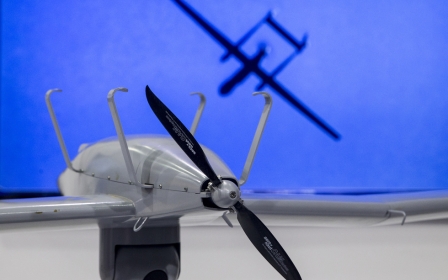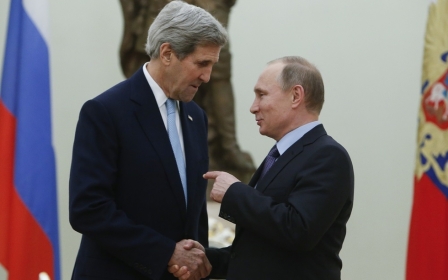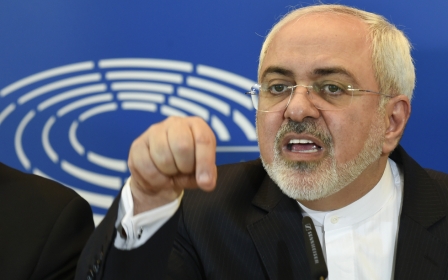Is this truly the beginning of the end for the conflict in Syria?

The so-called "ceasing hostilities" agreement in Syria took effect at mid-night on 26 February. There were indications on the ground during the past few days of a tangible decline in the intensity of clashes in spite of violations perpetrated by the regime forces and the Russian airplanes on more than one location. One day earlier, and while the UN Security Council was about to vote over the temporary truce resolution, that was agreed upon by the United States and Russia, more than 90 armed organisations opposed to the regime declared adherence to the agreement.
The Assad regime in Damascus also made a similar declaration. Within the general framework of the extremely costly Syrian crisis, at the human level as well as at all other levels, ceasing hostilities can be considered a major step along the path of a political settlement. The parties that sponsor the political resolution hope that the agreement will put an end to the targeting of civilians, that it will provide safe passage for relief to reach areas that are under siege and that it will create a less hostile climate that will pave the way for initiating serious negotiations at the Geneva three talks.
However, several facts indicate that the agreement may turn out to be a false dawn and that the forces keen on maintaining the conflict are still at work.
There is nothing to reassure that the agreement to cease hostilities will hold for long. In fact, the agreement was not supposed to last for more than two weeks. With the exception of the areas that are under the control of the Islamic State and al-Nusrah Front, which extend into areas that are under the control of other opposition groups that are now called moderate, it will be difficult to monitor whether the raids carried out by regime aircraft or Russian planes target this side or the other.
Regime sources have also indicated the existence of another exception to the truce is applicable to Deraa and areas surrounding it in the Damascus countryside. In case such areas, which have been brutally under siege for years, are targeted it will be difficult to imagine that rebel groups will be able to maintain self-restraint.
The regime forces and the Shia and Kurdish militias that fight on their side supported by the Russian air force, achieved tangible progress in Aleppo’s northern countryside and in some of Aleppo’s eastern countryside as well as the Latakia countryside during the two months that preceded the truce announcement.
However, the regime has not yet been able to seize firm control of the supply routes across the Turkish borders and has not yet succeeded in laying siege to Aleppo. In addition, the success of the Islamic State in blocking the main road to Aleppo only days before the truce took effect dealt a painful blow to the regime’s military efforts in the northern region. The regime is not expected to seriously observe the truce while seeing its recent military accomplishments swing in the balance.
Yet, there are other dangers that may undermine the truce and the agreement to cease hostilities. Since the beginning of this year, and by virtue of tangible US, Russian and Syrian regime military support, as well as the coordination of operations with the Russian air force in Syria, the Kurdish militias managed to accomplish a tangible military advance to the west of the Euphrates, particularly in Aleppo’s northern countryside. Consequently, the militias have become conterminal with Turkey along a huge expanse of the Syrian-Turkish borders.
Turkey, which was bombing the position of the Kurdish militias for several weeks, has not concealed that it does not regard the truce agreement binding when it comes to dealing with these militias, just as it does not regard it as binding in the war against the Islamic State.
According to the Turkish designation, the militias affiliated with the Kurdish Democratic Union Party (PYD) in Syria are no less terroristic than the Islamic State. Considering that the Kurdish militias are waging war on several fronts, whether against the Islamic state or against the other Syrian opposition forces, and that they are endeavouring to establish a link between the Kurdish regions in north east of Syria and those in the west of Syria, while minimising the presence of the Arab population in those regions, only a miracle can convince these militias to observe the truce. In addition to all of this, the position of Iran, whose forces are fighting alongside the regime in the field, vis-à-vis the truce is still unclear.
This is how the fate of the truce agreement looks at the purely tactical level. However, there is something that is more important and more significantly indicative. On one hand, there is still no sign of a possible approximation between the vision of the opposition forces and that of Assad and allied forces with regard to the political solution. The opposition sees that the only possible solution for the raging conflict would be the creation of a fully authorised governing body that excludes the figures and leaders of the current regime and that leads Syria into a completely new era.
However, Assad believes that negotiations would provide him with the opportunity to secure and maintain his reign with international support, or at least international consent.
Two factors will determine the fate of such divergence between the visions of the two sides and whether Syria’s future will be more in line with the vision of this or that of the two parties. The first factor has to do with the agreement among international powers while the second factor has to do with the military balance between the regime and opposition forces.
Amid all the debate about the Russian direct intervention in Syria, many seem to ignore the close relationship between this major Russian step and the conflict over the Ukraine. From the Russian point of view, Syria has been the opportunist circumstance for a response to the painful loss in the Ukraine and an appropriate bargaining chip over the limits of potential Western influence in the immediate Russian vicinity. Although every military action must eventually come to an end, Russian is still able to continue the role it is playing in Syria for at least several more months.
On the other hand, the Obama administration is not interested in intervening in Syria, neither by means of exercising tangible pressure on Russia to end its own intervention nor by means of bargaining over the Ukraine. From Washington’s point of view, Syria is not a strategic location and it does not pose a direct threat to American security. Within the wider American strategic vision of the Middle East, so long as balance is maintained between the Shia and Sunni camps, and so long as local forces willing to fight against the Islamic State are available, there would be no need to be embroiled in the Syrian crisis.
Such differences between the positions and the roles of Washington and Moscow necessarily impact on the positions and roles of the regional powers. The Iranian mobilisation in support of the Assad regime continues while the Turkish and Saudi policy vis-à-vis the crisis seem more confused and more hesitant.
There is no sign that a military resolution is possible, or even a sudden change in the military balance of power. Of course, the imbalance in the international and regional positions plays a significant role in maintaining the regime’s military lines, and even in its success together with its allies in making some recent gains.
However, the more important issue, in fact, and this is the problem that overwhelmed the Syrian revolutionary forces throughout the past few years, has been the state of extensive and wide-scale fragmentation within the camp for the military opposition. It was understandable for anti-regime military groups to multiply during the period from 2012 to 2013 when taking up arms was not the central choice of the revolution but was instead, in most cases, a local reaction to the brutal violence and persecution exacted by the regime against the people and their peaceful uprising.
Yet, the failure of the armed groups to create a unified framework, despite some of the efforts made in this regard, constituted, and continues to constitute, a major shortcoming in the performance of the revolutionary forces. The shortcoming has grown to be more severe as the revolution transformed into what resembles a national liberation movement against a regime that collaborates with a foreign occupier. How can more than 90 armed groups achieve victory in a war waged against a regime that leads a cohesive minority and that is supported by an Iranian front that is obsessed with sectarian hysteria and an international force whose military capabilities cannot be underestimated? It is no less dangerous that such fragmentation creates a considerable margin for the existence, growth and spread of the Islamic State.
In the shade of such faulty international and regional stances, and the reduction of pressures on the ground, only a miracle can turn two weeks of no hostilities into a serious truce or push the regime toward negotiations to find a solution that is acceptable to the general public and to the opposition forces.
If anything is certain, it is the fact that conflict in Syria is only likely to continue. However, this is no longer just a revolution against a tyrannical despotic regime, but a national liberation struggle against a foreign occupying power. Eventually, no matter how long this conflict lasts, those who came to Syria from afar will go back and only the owners of the land and the country will remain. These are the Syrians, the Turkmen, the Kurds and the Arabs.
- Basheer Nafi is a senior research fellow at Al Jazeera Centre for Studies.
The views expressed in this article belong to the author and do not necessarily reflect the editorial policy of Middle East Eye.
Photo: Syrians gathered to protest against the rule of President Bashar al-Assad, as well as his Russian backers, in the rebel-controlled Maarrat al-Numan district in Idlib, after Friday prayers on 4 March, 2016 (AA).
New MEE newsletter: Jerusalem Dispatch
Sign up to get the latest insights and analysis on Israel-Palestine, alongside Turkey Unpacked and other MEE newsletters
Middle East Eye delivers independent and unrivalled coverage and analysis of the Middle East, North Africa and beyond. To learn more about republishing this content and the associated fees, please fill out this form. More about MEE can be found here.





